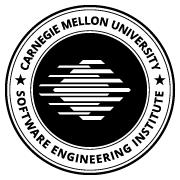Late 1980s - Mid 1990s: Establishing the Foundations of Process and Maturity
This period saw a strong emphasis on formalizing and improving the software development process itself. The core idea was to bring discipline and measurement to software engineering, often by adopting frameworks to assess and enhance organizational capability. The Software Engineering Institute's (SEI) Capability Maturity Model (CMM) was a central theme, as evident in titles like "Characterizing the software process: a maturity framework" (1988) and "Capability maturity model, version 1.1" (1993). This focus extended to individual practices with the "Personal Software Process" (PSP), exemplified by "Using a defined and measured Personal Software Process" (1996) and "Making process improvement personal" (1995). Alongside process, risk management emerged as a critical concern, with articles like "Putting risk management into practice" (1997) highlighting its growing importance. This era laid the groundwork for structured software development, focusing on internal consistency and quality control.
Late 1990s - Early 2000s: Adapting Processes to New Realities
As the millennium approached, the software engineering landscape began to expand beyond internal process mechanics. While process improvement remained a theme, new challenges and paradigms emerged. The advent of the internet brought security to the forefront, as seen in "Software security in an Internet world: an executive summary" (1999). The increasing reliance on commercial off-the-shelf (COTS) components introduced new complexities, leading to discussions on "Developing new processes for COTS-based systems" (2000) and defining "What do you mean by COTS?" (2000). This period also witnessed the early recognition of alternative development methodologies, with "Extreme programming from a CMM perspective" (2001) signaling the nascent interest in agile approaches. Furthermore, the very foundation of the field was questioned, with "The impending changes in software education" (2002) and the strategic importance of "SEI's software product line tenets" (2002) indicating a broader, more outward-looking perspective on software engineering.
Mid 2000s - Early 2010s: Architecture, Standards, and System-Level Concerns
Following the foundational years of process and the initial adaptations to external factors, this period saw a significant maturation in thinking about software architecture and its role in successful development. The integration of architecture with agile methodologies became a key discussion point, illustrated by "Software architecture-centric methods and agile development" (2006). The focus broadened to include standards, project management, and the practical application of quality attributes, as suggested by "How standards enable adoption of project management practice" (2005) and "Making Practical Use of Quality Attribute Information" (2008). The concept of "Situated Software" (2008) highlighted an increasing awareness of software's contextual embedding. Continuities from the previous period included a sustained interest in "Software Product Line Success" (2010), while "Service Orientation and Systems of Systems" (2011) pointed towards an evolving understanding of complex, distributed architectures.
Mid 2010s - Late 2010s: The Impact of New Technologies and Human-Centric Software
This era marked a distinct shift towards addressing the implications of rapidly advancing technology and the human element within software engineering. Mobility became a pervasive concern, not just technically but also in terms of its broader implications, as reflected in "The True Cost of Mobility?" (2014). The explosion of data necessitated new architectural approaches, leading to the "Software Architecture Convergence in Big Data Systems" (2015), and the critical challenge of "If It Does Not Scale, It Does Not Work!" (2019). Beyond technical challenges, the discourse expanded to include the role and qualities of the architect ("What Makes an Architect Successful?" 2016), the very "Future of Software Engineering" (2016), and, notably, ethical considerations ("Ethics Is a Software Design Concern," 2019) and the importance of developer perspectives ("The Voice of the Developer," 2019). This represented a more holistic view, recognizing both the technical demands and the societal and human dimensions of software.
Early 2020s Onwards: AI, Diversity, and Evolving Infrastructure
The most recent period highlights emerging frontiers and persistent challenges. Artificial Intelligence begins to fundamentally reshape the professional landscape, evidenced by "An AI Engineer Versus a Software Engineer" (2022), signaling a pivotal moment for defining the future skillset of software professionals. Mobile continues to present "Trends and Challenges" (2021), indicating its enduring complexity rather than a resolved issue. A significant shift towards inclusivity is apparent with "Mom, Where Are the Girls?" (2021), pointing to a growing awareness of diversity in the field. Furthermore, the automation and formalization of operational aspects are captured by "Infrastructure as Code and Software Architecture Conformance Checking" (2023). This period also shows a reflective stance, with the "No Silver Bullets, Only Disciplined Reflections to Guide Course Corrections" (2023) editorial reinforcing a commitment to continuous, pragmatic improvement, building on decades of learned lessons.

